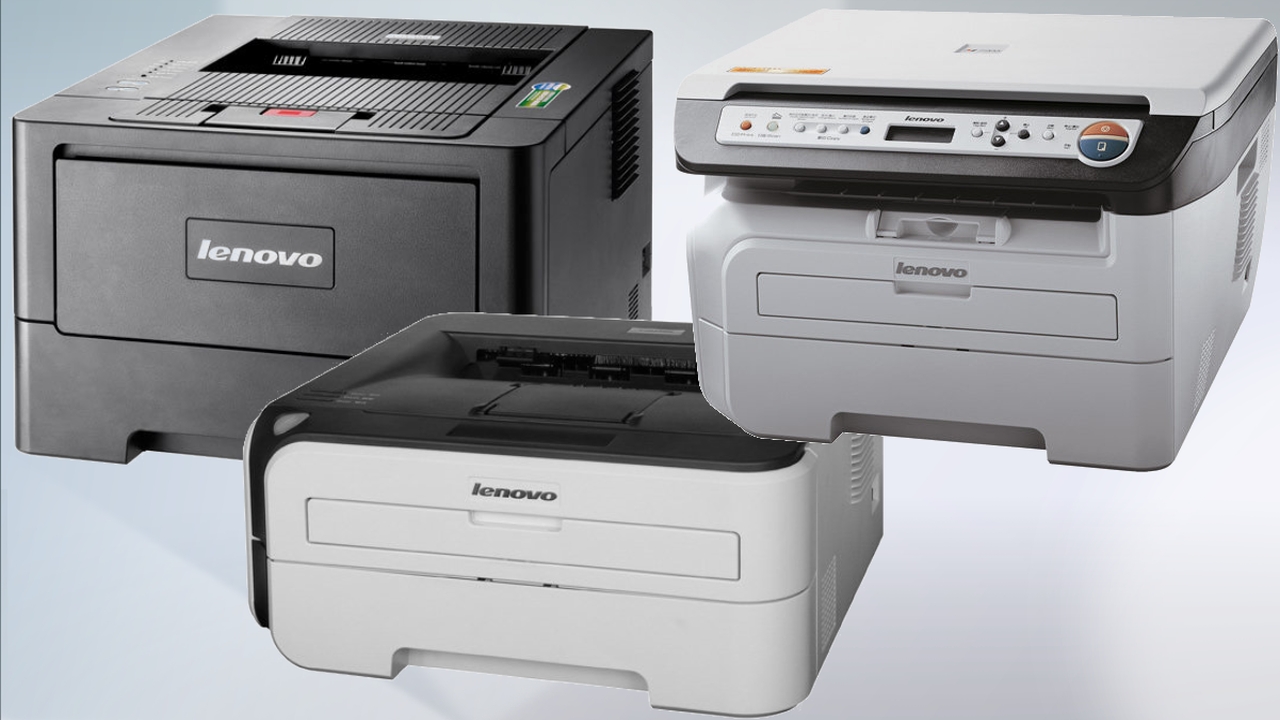Watch out HP: printers could be Lenovo's next big thing
LePrinter anyone?

Walking on Lenovo's booth at IFA a couple of weeks ago, I couldn't help wonder what would be the next step for the tech behemoth. The company appeared to be hitting the right notes and the press conference was a relative success with dozens of journalists attending.
I exchanged a few ideas with Andrew Barrow, worldwide consumer product marketing director at Lenovo, and it got me thinking about a Lenovo launch last year.
In August 2013, it unveiled its first printers for the Chinese market. It was a low-key announcement, a launch that, unlike other Lenovo announcements, barely registered on western technology websites. You can't even find a review of one of them online.
A succinct press release highlighted the fact that these laser printing solutions were geared towards the home user and were tightly integrated with Android devices, allowing users to interact directly with the printers rather than using a traditional printer to do so.
All about ink
News of the launch of that printer range must have reached HP and other vendors months before as Lenovo's printers (or Legend as they are known in China) are manufactured by the Kinpo Group, a massive conglomerate whose production lines churn out half of the printers sold globally.
The global printing market is tricky though. Take the case of Zhuhai Seine Technology, a Chinese company which had big global ambitions in the printer market, having done particularly well in the highly lucrative consummables arena.
Lenovo's sister company, Legend Capital, acquired a 15% stake in the company, a clear indication of the validity of its business model. In 2012, they launched a new printing brand, called Pantum. in Europe, after having captured 5% of the Chinese market in 2011.
Sign up to the TechRadar Pro newsletter to get all the top news, opinion, features and guidance your business needs to succeed!
It worked out though as sales proved to be disappointing, leaving the company with the unenviable British record of the cheapest brand new laser printer on the market as the channel got rid of remaining stocks. At some point, it was literally being given away when purchasing five reams of A4 paper.
Lenovo's biggest challenge
But the outcome is likely to be different for Lenovo if it is willing to invest in the channel and take some calculated risks. Unlike Pantum, it is not an unknown brand; it owns Medion, Motorola (Mobility), the entire x86 portfolio of IBM and NEC's PC and mobile business as well as the spiritual son of former storage superstar Iomega, LenovoEMC.
That's a lot of goodwill value and a lot of powerful relationships across the channel and various ecosystems, something that, like in football, only money can buy. Adding another product line will not require as much effort as Pantum's failed endeavour, especially if it is accompanied by some financial incentives.
Speaking of money, that's one very powerful motivator for Lenovo. Having done pretty well with smartphones (pointing at number 3 after the Motorola acquisition) and personal computers (currently number 1), the Chinese company needs to find another long term engine of growth.
And printing is spot on; it is the perfect upsell for households and businesses buying a new PC and is a potential cash cow thanks to consummables. Printers brought in $5.59 billion for HP last quarter (£3.44 billion, AU$ 6.17 billion) and had a 18.35% margin. In comparison, HP's personal systems had a net revenue of $8.65 billion (£5.33 billion, AU$ 9.55 billion) but a wafer thin margin of 4%.
Printing money
And despite dire predictions (remember the whole paperless office debate?), the world is printing more than ever before and the global printer market is expected to grow over the next five years, rather than flatline (albeit at a slow rate).
Add in the existing relationship with Kinpo and a potential tie-up with Zhuhai Seine and 2016 - rather than 2015 - might be the year when stars aligned and Lenovo finally goes global with its printer range. Next year will likely see Lenovo rationalise its brand strategy after the quickfire acquisition of Motorola and IBM x86 server portfolio.
I will not rule out the acquisition of another mobile phone company (BlackBerry) to leverage its enterprise presence, a printer brand (Lexmark whose printers are manufacturerd by Kinpo and is originally IBM's own printing brand before it was spun out) and software/SaaS vendors.
What I don't expect Lenovo to do - for now - is go head to head against Huawei in the high-stake, high-margin telecommunications market. But then again, Lenovo has surprised us this year and I wouldn't bet against more "wow" moments from the Chinese vendor in 2015.

Désiré has been musing and writing about technology during a career spanning four decades. He dabbled in website builders and web hosting when DHTML and frames were in vogue and started narrating about the impact of technology on society just before the start of the Y2K hysteria at the turn of the last millennium.